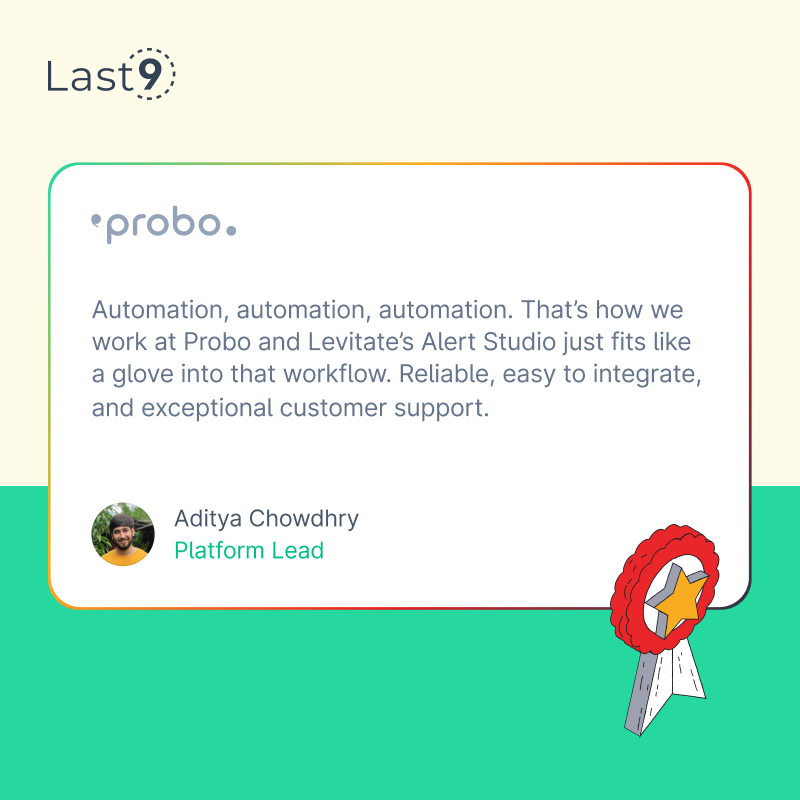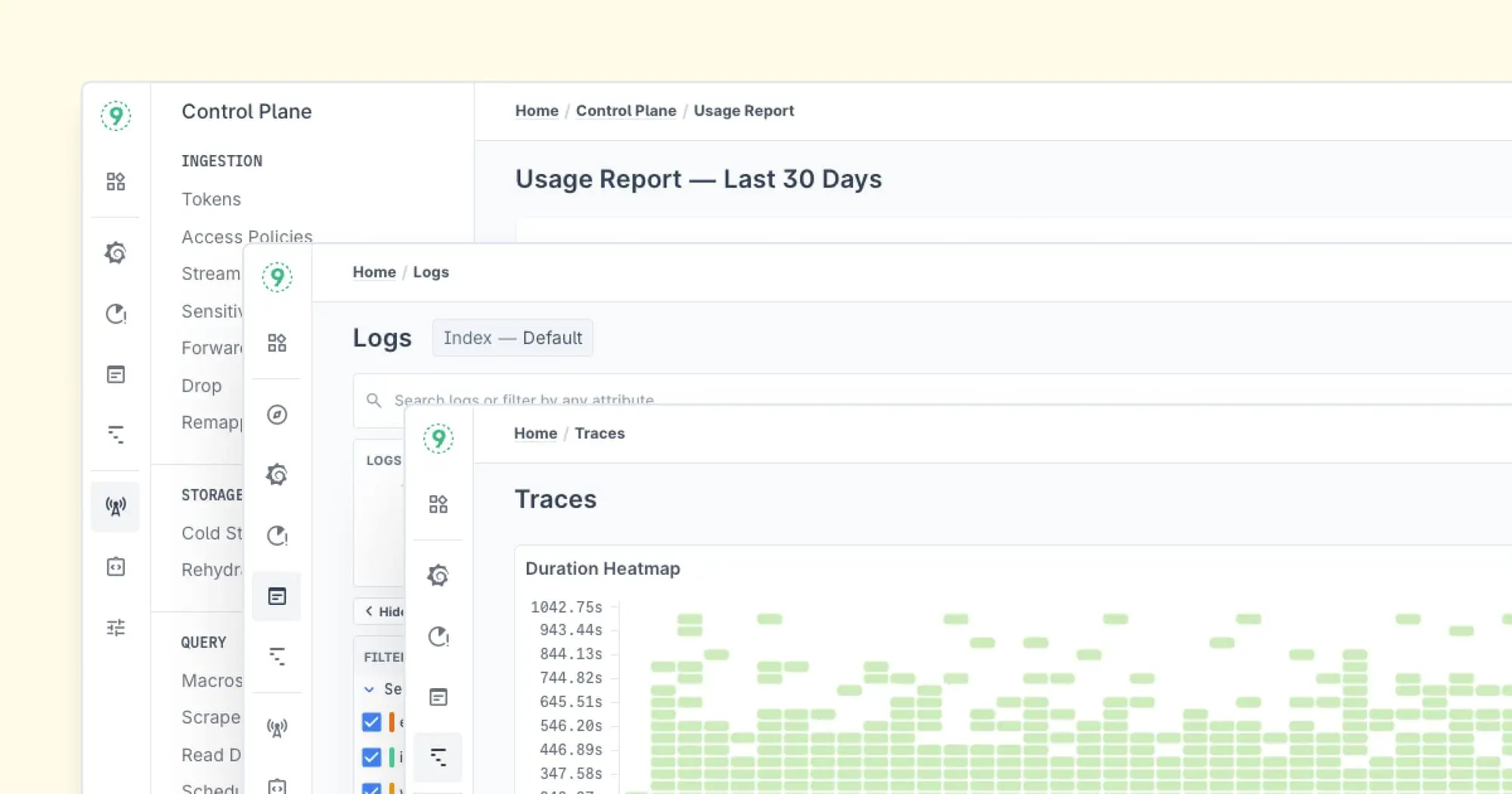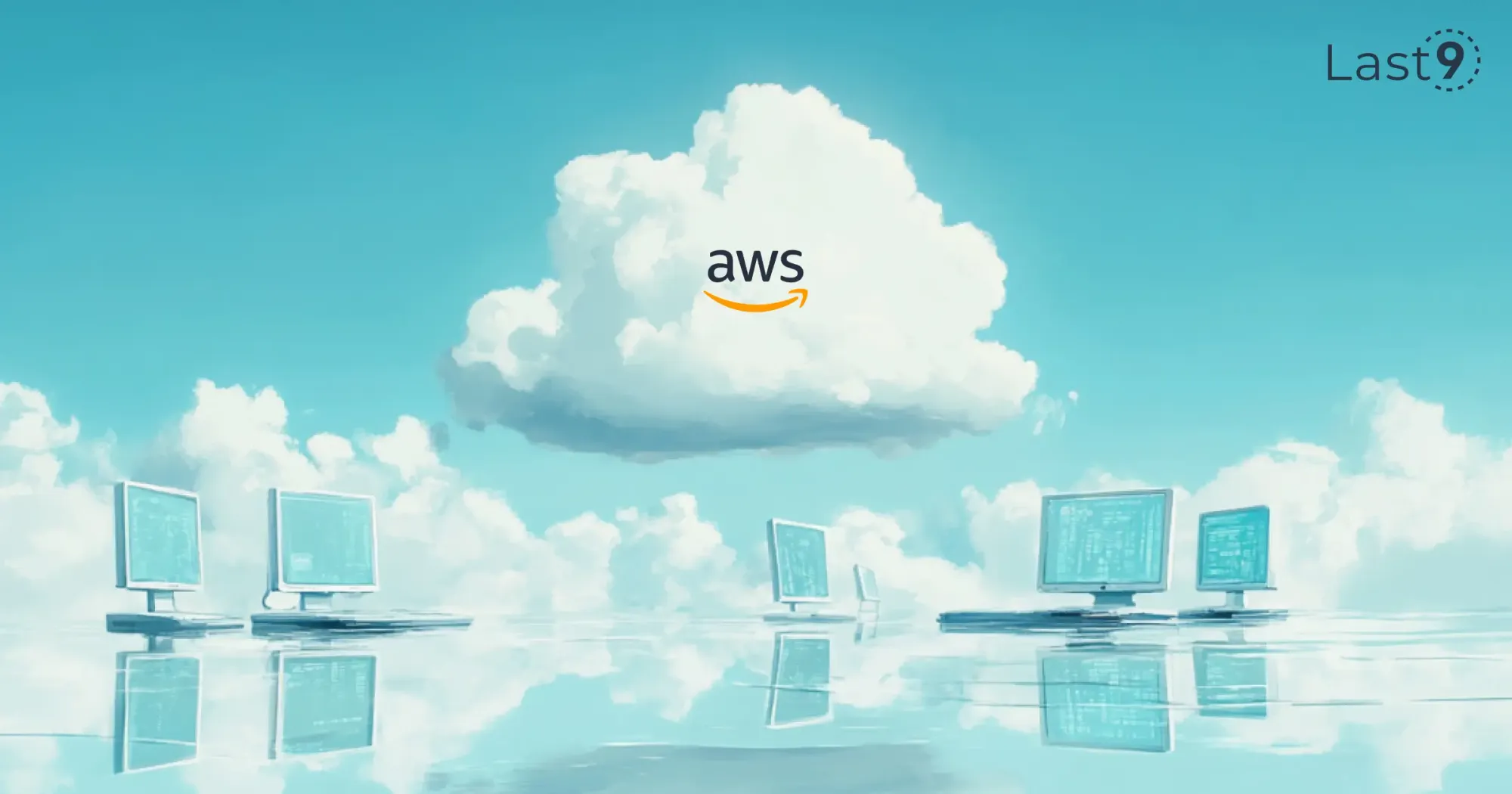Amazon Web Services (AWS) has been a big name in cloud computing for a while now, offering all kinds of tools and services for businesses of every shape and size. But as cloud services get more complex, more and more companies are starting to look around for AWS alternatives that better fit their needs, budgets, or goals.
Maybe you’re trying to cut costs, want more control over your setup, or need something that caters to a specific use case. Whatever the reason, there are plenty of AWS alternatives out there that can match—or sometimes even beat—what AWS brings to the table.
In this guide, we’ll take a closer look at some of the best options, break down their strengths and features, and share where they shine so you can pick the one that’s right for your business.
Reasons for Considering AWS Alternatives
While AWS is a cloud powerhouse, it’s not always the right fit for every business. Here are a few reasons why you might want to consider exploring other options:
- Cost Efficiency
AWS pricing can be a bit of a maze, especially with unexpected charges popping up. Other providers often offer clearer pricing models and better value—especially if you're a smaller business or have more predictable workloads. - Specific Features
If your business depends on certain tools, other providers might have exactly what you need. For instance, Google Cloud excels in AI and machine learning, while Azure is a top choice for hybrid cloud setups. - Better Support
AWS support can sometimes be a slow-moving train. Smaller providers like DigitalOcean tend to offer more direct, responsive customer service, which can be a game-changer when you need quick fixes. - Simplicity
Let’s be honest, AWS can feel like a never-ending buffet of options. If you’re looking for something more straightforward, platforms like Linode or DigitalOcean make it easier to manage your infrastructure without needing an advanced degree in cloud services. - Geographic Focus
If you're focused on a specific region, like Asia, platforms such as Alibaba Cloud offer better local support and faster speeds that may suit your needs better. - Avoiding Vendor Lock-In
Sticking with AWS long-term can make you feel a bit boxed in. Exploring alternatives gives you more flexibility, allowing you to spread your infrastructure across multiple providers and avoid being overly dependent on one.
In short, while AWS is a solid choice for many, alternatives can provide better pricing, specialized features, and simpler solutions that are tailored to your unique needs.
Comparative Analysis of Top Cloud Providers
| Cloud Provider | Strengths | Best For |
|---|---|---|
| Google Cloud Platform (GCP) | Excellent for machine learning, big data, and AI tools (e.g., TensorFlow, BigQuery). | Data-heavy applications, AI/ML-focused businesses. |
| Microsoft Azure | Great for hybrid cloud, strong Microsoft software integration (Windows, SQL). | Enterprises using Microsoft products, hybrid cloud. |
| IBM Cloud | AI capabilities (IBM Watson), strong security, and compliance. | High-performance computing, mission-critical apps. |
| Oracle Cloud | Advanced database management, autonomous database features. | Businesses needing advanced database solutions. |
| DigitalOcean | Simple, affordable, and developer-friendly with great community support. | Startups, developers, and small businesses. |
| Alibaba Cloud | Strong in Asia-Pacific region, flexible pricing, excellent big data and AI. | Businesses targeting Asia, scalable AI/big data needs. |
| Linode | Predictable pricing, high-performance servers, easy setup. | Small businesses and developers needing reliable hosting. |
Top 7 AWS Alternatives You Need to Know
Google Cloud Platform (GCP)
Google Cloud is a solid choice for businesses looking for a reliable and scalable cloud platform, especially if you're venturing into data analytics, machine learning, or AI-driven projects.
GCP stands out with its cutting-edge approach to data management, making it ideal for data-heavy applications.
Why Choose GCP?
- Machine Learning & AI: If you're working on AI or machine learning, GCP has you covered with powerful tools like TensorFlow, BigQuery, and AutoML. It’s a great fit for data scientists and developers building smart applications.
- Cost Efficiency: GCP offers sustained use discounts, so if you’re running services for a while, you’ll automatically save. It’s a nice bonus for long-term workloads.
- Global Network: Google’s global network is known for being fast and reliable, making it a great option for businesses with operations spread around the world.
Best for
Businesses focusing on artificial intelligence, machine learning, and big data analysis.
Microsoft Azure
Microsoft Azure is a strong contender in the cloud space, offering a wide range of services with a particular focus on hybrid cloud solutions. As Microsoft’s own platform, Azure integrates seamlessly with the company’s existing tools, making it an attractive option for businesses that already rely on Microsoft products.
Why Choose Azure?
- Hybrid Cloud: Azure is perfect for businesses that want to run workloads both on-premises and in the cloud. It excels in hybrid cloud setups, offering the best of both worlds—scalability without giving up on-prem control.
- Enterprise Support: If your organization is deeply embedded in Microsoft products like Windows Server, Active Directory, or SQL Server, Azure will integrate effortlessly with your existing tools, ensuring minimal disruption.
- Security & Compliance: Azure places a strong emphasis on security and compliance, offering a suite of features that make it a go-to choice for industries with tight regulatory requirements.
Best for
Enterprises already using Microsoft software and businesses looking for hybrid cloud capabilities.
IBM Cloud
IBM Cloud stands out for its focus on high-performance computing and strong security features. It’s particularly known for its advanced AI capabilities, data analytics, and solutions designed for enterprise-level needs.
Why Choose IBM Cloud?
- AI & Data Analytics: IBM Watson is a standout tool, offering powerful AI capabilities for businesses looking to gain insights into customer behavior and optimize their operations.
- Enterprise-Level Support: IBM Cloud is built for large enterprises with complex needs, providing the robust infrastructure required for mission-critical applications.
- Security: Security is a top priority for IBM Cloud, with advanced protocols in place to safeguard sensitive data and ensure compliance with strict regulations.
Best for
Enterprises seeking high-performance computing, advanced AI solutions, and top-tier security.
Oracle Cloud
Oracle Cloud offers a range of cloud services, with a particular emphasis on databases, enterprise applications, and Oracle software products. If your business is already using Oracle's suite of products, Oracle Cloud provides a seamless extension of those tools in the cloud.
Why Choose Oracle Cloud?
- Database Solutions: Oracle Cloud is known for its powerful database services, making it an excellent choice for businesses that depend on high-performance database management systems.
- Enterprise Resource Planning (ERP): Oracle Cloud integrates well with its ERP, finance, and HR systems, delivering a comprehensive solution for enterprise-level needs.
- Autonomous Cloud: Oracle's autonomous database offers self-patching and self-optimizing features, meaning it takes care of routine maintenance tasks, reducing the need for manual intervention.
Best for
Businesses that require strong database management and already use Oracle's enterprise applications.
DigitalOcean
DigitalOcean is a simpler, more cost-effective alternative to AWS, designed for developers and small businesses. It focuses on providing a straightforward cloud computing platform with easy-to-use services.
Why Choose DigitalOcean?
- Simplicity: DigitalOcean is known for its simplicity and ease of use, with an intuitive interface and clear documentation that can help developers get started quickly.
- Cost-Effective: DigitalOcean offers transparent, affordable pricing, making it an excellent choice for startups, small businesses, and developers.
- Developer-Focused: The platform provides tools and services designed specifically for developers, such as scalable droplets (virtual private servers) and Kubernetes support.
Best for Startups, developers, and small businesses looking for a user-friendly, budget-friendly cloud solution.
Alibaba Cloud
Alibaba Cloud is a leading cloud provider in Asia and a growing player in the global market. Known for its scalability and security, Alibaba Cloud is a strong AWS alternative, especially for businesses that operate in the Asia-Pacific region.
Why Choose Alibaba Cloud?
- Global Reach: With data centers across Asia, Europe, and North America, Alibaba Cloud offers excellent coverage in the Asia-Pacific region, which can be a huge advantage for businesses with operations in that part of the world.
- Big Data & AI: Alibaba Cloud provides powerful analytics and AI capabilities, making it an ideal platform for data-driven businesses.
- Cost Efficiency: Alibaba Cloud offers competitive pricing and flexible plans, making it a cost-effective option for growing businesses.
Best for Businesses operating in Asia-Pacific and those requiring scalable infrastructure for big data and AI applications.
Linode
Linode is a cloud provider that offers high-performance virtual private servers (VPS). It’s a popular choice for developers and small businesses looking for affordable and reliable hosting solutions.
Why Choose Linode?
- Simple Pricing: Linode provides clear, predictable pricing, which is a major advantage for businesses that need to budget effectively.
- Developer-Focused: Linode’s platform is designed with developers in mind, offering features like flexible API access, scalable infrastructure, and high-performance SSD-based virtual machines.
- Customer Support: Linode offers excellent customer support, with 24/7 assistance from a knowledgeable team.
Best for Developers and small businesses that need a straightforward, cost-effective cloud hosting solution.
How to Migrate From AWS to Another Cloud Provider
Migrating from AWS to another cloud provider is a big decision that requires careful planning and execution. Whether you're seeking cost savings, performance improvements, or more suitable services, here are some strategies to help ensure your transition goes as smoothly as possible:
1. Lift and Shift (Rehost)
This strategy involves moving your workloads and applications from AWS to the new cloud provider as-is, without making any changes. It's a simple and quick approach that minimizes downtime but doesn’t take full advantage of the new cloud provider’s features.
- When to Use: If you need a quick migration without making major changes to your infrastructure.
- Pros: Fast and straightforward.
- Cons: Doesn’t optimize the new cloud's unique features.
2. Replatforming
Replatforming involves migrating your applications to the new cloud while making some adjustments to optimize them for the new environment. This could include upgrading databases or configuring services to make use of the new provider’s offerings.
- When to Use: If you want some optimization but don’t want a complete overhaul of your infrastructure.
- Pros: Allows for some cloud-specific optimization.
- Cons: Requires more planning than a simple lift and shift.
3. Refactoring
With refactoring, you redesign your applications to fully capitalize on the capabilities of the new cloud provider. This could mean moving to a serverless architecture or switching to different services to maximize scalability and performance.
- When to Use: If you want to make the most of the new cloud’s features and scalability.
- Pros: Fully leverages the new cloud’s capabilities.
- Cons: Requires significant effort and time to redesign applications.
4. Hybrid Cloud Strategy
In a hybrid cloud approach, you run some workloads on AWS and others on the new provider, either temporarily or long-term. This strategy allows for a gradual migration and can reduce risks associated with switching entirely to a new cloud provider.
- When to Use: If you want to migrate gradually or keep some workloads on AWS.
- Pros: Offers flexibility and gradual migration.
- Cons: Adds complexity in managing multiple cloud environments.
5. Cloud-Native Rebuild
The cloud-native rebuild strategy involves completely rebuilding your applications using the new provider’s tools, services, and best practices. While this is the most time-consuming approach, it offers the greatest long-term benefits since your applications will be fully optimized for the new environment.
- When to Use: If your applications need a complete redesign or you want to start fresh with the new cloud provider’s features.
- Pros: Fully optimized for the new cloud environment.
- Cons: Time-consuming and resource-intensive.
6. Data Migration and Testing
Data migration is a critical part of the process, no matter which strategy you choose. It's essential to use specialized tools to ensure data is transferred securely and without loss of integrity. After migration, comprehensive testing is vital to verify that everything functions as expected in the new cloud environment.
- When to Use: With any of the above strategies, especially when moving large datasets.
- Pros: Ensures data is correctly migrated and remains intact.
- Cons: Requires careful planning to avoid downtime or data loss.
Choosing the right migration strategy depends on your unique business needs and goals. Whether you opt for a quick "lift and shift" or a more comprehensive refactoring or rebuild, proper planning and testing are key to a smooth transition.
How to Choose the Right Cloud Provider
Choosing the right cloud provider is a crucial decision that affects your business’s performance, scalability, and costs. Here are the key factors to consider to make an informed decision:
1. Cost and Pricing Model
When evaluating cloud providers, consider their pricing structures and what fits best with your budget and needs. Be sure to look at:
- Total cost of ownership: Look beyond initial pricing. Consider long-term costs, including storage, bandwidth, and any additional services you might require.
- Cost predictability: Choose a provider with a transparent pricing model to ensure there are no surprise costs down the road.
2. Performance and Reliability
Your cloud provider must deliver reliable performance and minimal downtime. Ensure they offer:
- Service Level Agreements (SLAs): Look for a provider that guarantees high uptime, typically 99.9% or higher.
- Global infrastructure: A network of well-distributed data centers can reduce latency and improve availability.
- Performance benchmarks: Review benchmarks for storage, compute, and network performance to ensure they meet your needs.
3. Security and Compliance
For businesses dealing with sensitive data, security is a top priority. Check for:
- Data protection: Ensure the provider offers strong encryption, access controls, and regular security audits.
- Compliance certifications: Confirm the provider meets industry standards, such as GDPR, HIPAA, or SOC 2.
- Private network support: Some providers offer private connections that can boost security further.
4. Scalability and Flexibility
As your business grows, your cloud needs will too. Choose a provider that allows for easy scaling:
- Elastic scalability: Look for auto-scaling features that can adapt to shifting workloads.
- Service variety: A broad range of services, such as computing, storage, and machine learning, offers flexibility as your needs evolve.
- Customization: Check if the provider offers customizable resource configurations for specific requirements.

5. Support and Customer Service
Strong customer support is essential for minimizing downtime and troubleshooting. Consider:
- 24/7 support: Ensure the provider offers round-the-clock assistance, especially if you operate in multiple time zones.
- Support options: Look for multiple contact methods (e.g., chat, phone, email) and an accessible knowledge base.
- Response times: Research reviews or case studies to assess the provider’s responsiveness to critical issues.
6. Integration and Compatibility
Your cloud provider should seamlessly integrate with your existing tools and software:
- Third-party integrations: Ensure the provider supports the software and services you’re already using (e.g., CRMs, analytics tools).
- APIs and SDKs: A robust set of APIs and SDKs will help integrate custom applications and services.
- Multi-cloud support: If you’re looking for a multi-cloud approach, choose a provider that allows easy integration with other clouds.
7. Geographic Reach
The provider’s data center locations impact both performance and compliance:
- Global presence: Ensure the provider has data centers near key markets to minimize latency and boost performance.
- Regional compliance: Some regions have strict data residency laws, so verify that the provider complies with local regulations for data storage.
8. Vendor Lock-In
Avoid becoming too dependent on a single cloud provider to maintain future flexibility:
- Portability: Ensure that your data and applications aren’t locked into proprietary formats that would make migration to another provider difficult.
- Exit strategy: Check whether the provider offers tools or services to help you migrate to another cloud provider if necessary.
9. Innovation and Roadmap
The cloud space evolves rapidly, and your provider should stay ahead of the curve:
- Service updates: Choose a provider that frequently updates and improves its services to ensure you benefit from the latest features.
- Emerging technologies: If your business is exploring new technologies like AI, machine learning, or blockchain, check whether the provider offers cutting-edge tools in those areas.
How to Manage Cloud Costs Without Losing Your Mind
Managing cloud costs can feel like keeping track of a never-ending series of charges, but don’t worry—there are ways to keep everything in check across different providers. Here’s a more human approach to managing your cloud spending without those surprise bills:
1. Get to Know Pricing Models
Cloud providers have different ways of charging, and understanding these models is key to avoiding unexpected costs:
- Pay-as-you-go: You pay for what you use—think compute power, storage, and data transfer.
- Reserved instances: These are long-term commitments that usually come with a discount (think of it as a subscription).
- Spot/Preemptible instances: These are like the bargain bin of cloud services, available at a lower price for flexible workloads.
Look at your usage patterns and pick the pricing model that suits you best. This way, you won’t end up overpaying.
2. Keep an Eye on Your Usage
Staying on top of your usage across different providers is the best way to avoid sticker shock. Here's how:
- Built-in cost tools: AWS Cost Explorer, Google Cloud Billing Reports, and Azure Cost Management are handy tools to track your usage and spending.
- Third-party tools: Services like CloudHealth, CloudCheckr, and CloudBolt can help you pull all your cloud billing data into one place, giving you a clearer picture of your spending.
Regularly check to see if there are any resources you don’t need or are using inefficiently, and scale back where possible.
3. Set Budgets and Alerts (Because It’s Easy to Forget)
Setting budgets and getting alerts will keep you in control of your spending:
- Budgets: Create monthly budgets for each cloud provider or specific project.
- Alerts: Set up alerts to warn you when your usage goes over a certain threshold. These tools are built into most cloud platforms, so there’s no excuse not to use them!
Having a warning system can prevent the unexpected chaos of hitting your limits.
4. Don’t Over-Provision
It’s easy to over-allocate resources, especially when you’re not sure how much you actually need. But scaling back can save you a lot of cash:
- Auto-scaling: Cloud providers like AWS, GCP, and Azure automatically adjust resources as needed—use this feature to avoid overpaying.
- Idle resources: If you have unused or underutilized resources (e.g., idle VMs or storage), turn them off or scale them back.
- Consolidate services: Rather than running multiple instances or services, try consolidating them to reduce redundancy and unnecessary costs.
5. Choose the Right Storage Solution
Storing data in the cloud can get expensive, so pick the right storage for your needs:
- Tiered storage options: Use lower-cost storage options (like AWS S3 Glacier) for data that are not frequently accessed.
- Data lifecycle policies: Set policies that automatically move older or unused data to more affordable storage.
It’s like cleaning out your closet—put the things you rarely need into storage that doesn’t cost a fortune.
6. Take Advantage of Discounts and Reserved Pricing
Many cloud providers offer ways to save if you commit long-term or use a lot of services:
- Committed usage: If you can predict your workload, commit to a 1- or 3-year plan and you could save up to 70% compared to pay-as-you-go prices.
- Volume discounts: The more you use, the bigger the discount—so if your company is growing, you might see some savings as you scale.
- Free tiers: Take advantage of the free offerings for things like testing, development, or low-traffic services.
Think of it like signing up for a membership that gives you better rates.
7. Use Multi-Cloud Strategies (But Don’t Overcomplicate)
Using multiple cloud providers can give you the best of both worlds—and potentially save you money—without locking you into one option:
- Comparative pricing: Spread workloads across different providers to take advantage of the best prices for specific services. For example, AWS for heavy computing tasks and Google Cloud for data analytics.
- Avoid vendor lock-in: By using multiple clouds, you avoid becoming too dependent on one provider, which gives you more flexibility and negotiating power.
Just don’t make it too complicated—keep it balanced!
8. Review and Adjust Regularly
Cost management isn’t a one-time thing. You need to keep reviewing your cloud usage and adjust as you go:
- Periodic audits: Do a check-in every quarter or year to make sure there aren’t any hidden costs or trends that could be costing you.
- Optimization reviews: Regularly revisit your cloud setup and make adjustments to improve efficiency without sacrificing performance.
Think of it like a financial health check for your cloud services.

Conclusion
Choosing the right AWS alternative comes down to your unique business needs, budget, and technical goals. While AWS is a major player in the cloud game, there are plenty of other platforms that might offer a better fit for your specific industry or use case.
When comparing options, make sure to evaluate the features, performance, and pricing of each platform carefully. Think about where you want to be in the long run—consider scalability, your future needs, and the kind of support you’ll need to make a smooth transition to your new cloud provider.
FAQs
What are the main alternatives to AWS?
Some of the top alternatives to AWS include Microsoft Azure, Google Cloud Platform, IBM Cloud, Oracle Cloud, and DigitalOcean. Each offers unique strengths, such as hybrid cloud capabilities, artificial intelligence tools, and specialized services that might better suit your specific business needs.
Why would I consider migrating from AWS?
You might consider migrating from AWS for reasons like cost savings, performance optimization, specific service offerings that better match your needs, or even vendor lock-in concerns. Exploring other cloud providers can help you find a platform that aligns better with your goals and budget.
How do I choose the right AWS alternative?
Choosing the right cloud provider depends on factors like pricing, performance, security, scalability, and the level of support needed. It's important to evaluate each platform's strengths and how they align with your business requirements. Assessing your future growth and the services you need now and in the long run can also help guide your decision.
Can I use multiple cloud providers at once?
Yes, many businesses adopt a multi-cloud strategy, using different providers for various services based on performance, pricing, or regional considerations. For example, you could use AWS for compute-heavy tasks and Google Cloud for machine learning. However, managing multiple clouds can introduce complexity, so it's important to plan and monitor usage carefully.
How do I manage costs across different cloud providers?
To effectively manage costs across cloud providers, it's crucial to understand each provider's pricing models and track usage with cloud cost management tools. Set budgets, monitor usage regularly, and consider using reserved instances or spot pricing for cost savings. Consolidating services and reviewing your cloud architecture periodically can also help keep costs in check.
Is there a significant learning curve when switching to a new cloud provider?
Switching to a new cloud provider may involve a learning curve, especially if the platform has different interfaces or configurations than AWS. However, most providers offer documentation, tutorials, and support to help with the transition. Additionally, tools for migrating workloads and services can reduce the amount of manual effort required.
How can I ensure security and compliance when switching cloud providers?
Ensuring security and compliance during a migration requires careful planning. Choose a provider that offers robust security features such as encryption, access controls, and regular audits. Be sure to assess compliance with relevant standards like GDPR or HIPAA based on your industry. Working with a security expert or using the cloud provider’s security tools can help maintain a secure environment during the transition.
What are the challenges when migrating to a new cloud provider?
Migration can come with challenges like data transfer speeds, downtime, integration with existing systems, and application compatibility. Careful planning is key to minimizing disruption. It’s helpful to conduct a detailed assessment of your existing infrastructure, test your migration plan, and have contingency plans in place in case issues arise during the process.
How can I test a new cloud provider before fully migrating?
Most cloud providers offer free trials or credits, which you can use to test their services without fully committing. Take advantage of these to pilot your applications and workloads in the new cloud environment. Testing will give you insight into performance, ease of use, and potential issues before committing to a full migration.
Can I keep some services with AWS while migrating other workloads?
Yes, many businesses choose a hybrid cloud approach, where they continue to use AWS for certain services while migrating other workloads to a different provider. This approach offers flexibility and reduces the risk of a "big bang" migration. Managing multiple cloud environments requires tools to ensure smooth operation across platforms.



